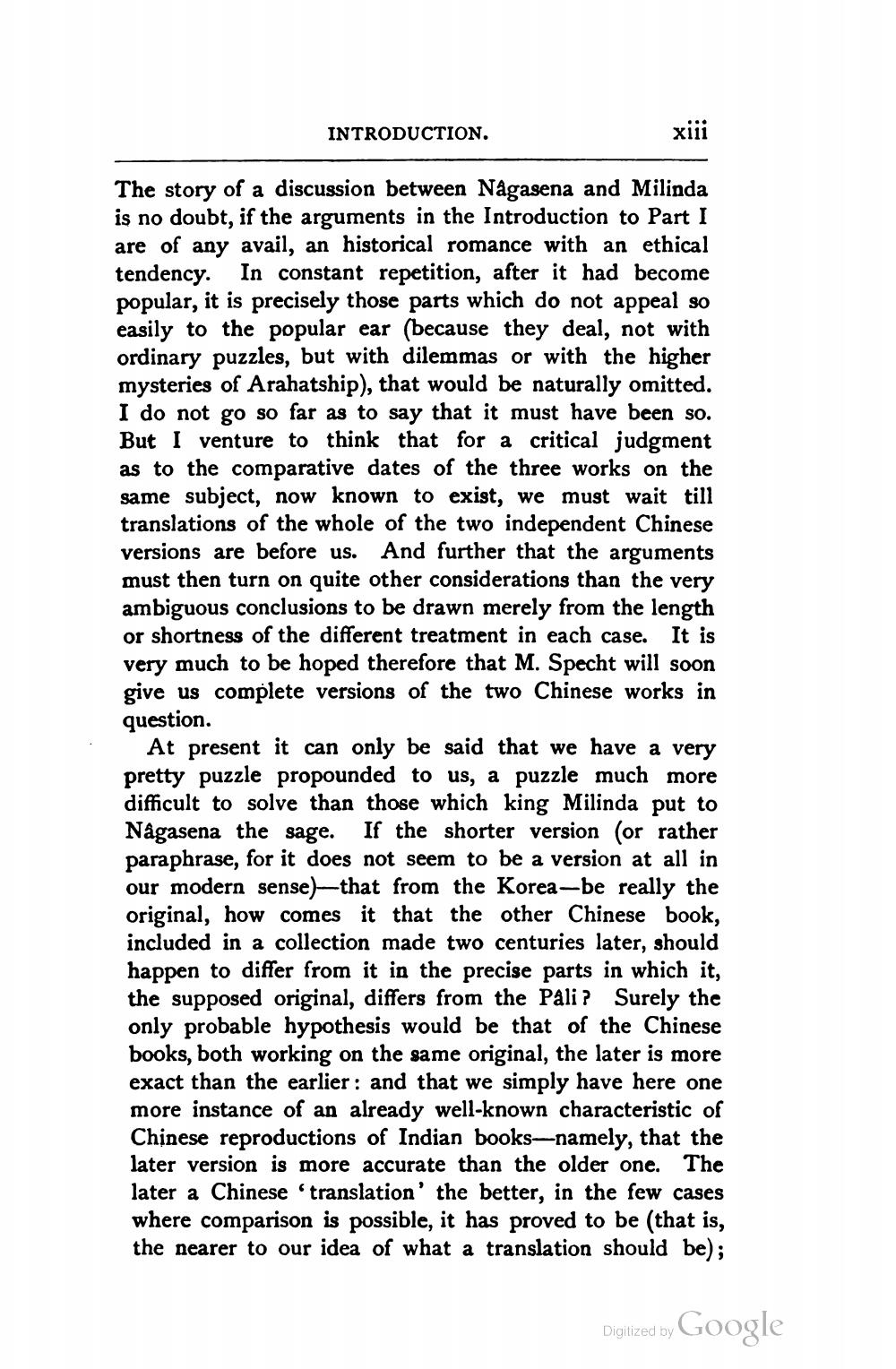________________
INTRODUCTION.
xill
The story of a discussion between Nâgasena and Milinda is no doubt, if the arguments in the Introduction to Part I are of any avail, an historical romance with an ethical tendency. In constant repetition, after it had become popular, it is precisely those parts which do not appeal so easily to the popular ear (because they deal, not with ordinary puzzles, but with dilemmas or with the higher mysteries of Arahatship), that would be naturally omitted. I do not go so far as to say that it must have been so. But I venture to think that for a critical judgment as to the comparative dates of the three works on the same subject, now known to exist, we must wait till translations of the whole of the two independent Chinese versions are before us. And further that the arguments must then turn on quite other considerations than the very ambiguous conclusions to be drawn merely from the length or shortness of the different treatment in each case. It is very much to be hoped therefore that M. Specht will soon give us complete versions of the two Chinese works in question.
At present it can only be said that we have a very pretty puzzle propounded to us, a puzzle much more difficult to solve than those which king Milinda put to Någasena the sage. If the shorter version (or rather paraphrase, for it does not seem to be a version at all in our modern sense)-that from the Korea-be really the original, how comes it that the other Chinese book, included in a collection made two centuries later, should happen to differ from it in the precise parts in which it, the supposed original, differs from the Pâli? Surely the only probable hypothesis would be that of the Chinese books, both working on the same original, the later is more exact than the earlier: and that we simply have here one more instance of an already well-known characteristic of Chinese reproductions of Indian books-namely, that the later version is more accurate than the older one. The later a Chinese 'translation' the better, in the few cases where comparison is possible, it has proved to be (that is, the nearer to our idea of what a translation should be);
Google
Digitized by




